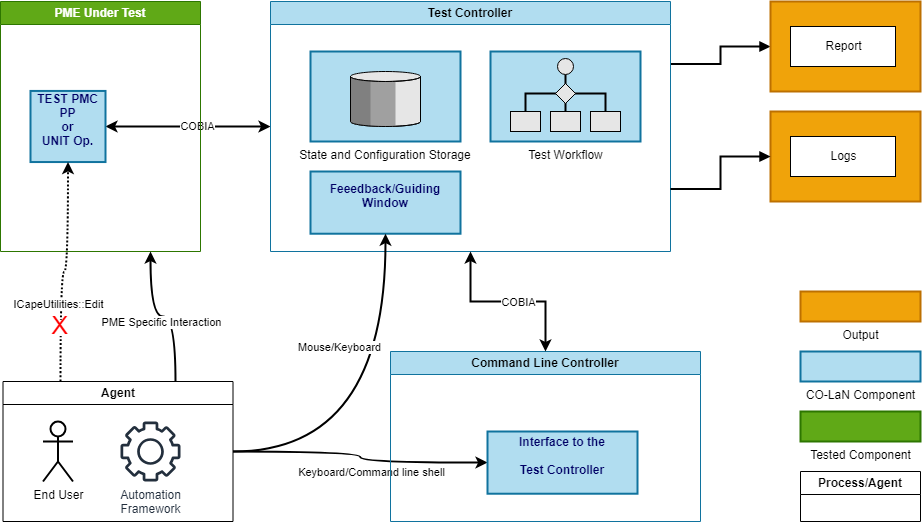CO-LaN Management Board has declared today that the high-level design phase for the CAPE-OPEN Test Suite for PMEs (Process Modelling Environments) has been completed by the contractors that were assigned to this task. The CAPE-OPEN Test Suite for PMEs is the counterpart for PMEs of the CAPE-OPEN Test Suite for PMCs under development by CO-LaN.
The agreed upon high-level design may be summarized as follows.
The complexity of the design of the CAPE-OPEN Test Suite for PMEs is coming from the necessary lifecycle control of the tests. A PME is in control of the lifecycle of any CAPE-OPEN PMC (Process Modelling Component) added to a flowsheet by the end-user, so that the CAPE-OPEN Test Suite for PMEs cannot mandate the order of interactions between the PME and a CAPE-OPEN PMC. From this it follows that the CAPE-OPEN Test suite for PMEs needs an independent software component, fully controlled by the end-user (or the User Interaction automation framework used by the PME provider) to run the tests in a controlled way. This independent software component is the Test Controller.
The Test Controller is in communication with an instantiated Test PMC inside the PME under test. The Test PMC can be a CAPE-OPEN Unit Operation or a CAPE-OPEN Property Package. The purpose of the Test PMC is to provide the interfaces exercised by the PME and relay the results and events triggered by the PME to the Test Controller to control the test workflow.

Because not all PMEs allow the end-user to configure every type of PMC using the ICapeUtilities::Edit CAPE-OPEN interface (the dotted line shown in figure above), the configuration of the Test PMC is performed through the Test Controller. The Test Controller has also the responsibility to produce the test report or test logs.
Although an end-user can interact directly with the Test Controller, a command line tool, the Command Line Controller, is also provided to facilitate the communication between the Test Controller and the end-user or a User Interface automation framework. It is assumed that any User Interface framework used for automation by PME vendors can be configured to work with the Command Line Controller, but this assumption needs to be validated.
CO-LaN Management Board agreed also today to launch the next actions of the development process of the CAPE-OPEN Test Suite for PMEs:
- Complete the design document, covering:
- Design of
- Components
- Interfaces between components
- Workflow
- Choice of windowing technology
- Minor architecture decisions
- Definition of the data structures to store the state of the tests and the workflow in the tests.
- Design of
- Creation of an “ultra minimal” Proof of Concept, using a simple test workflow, to evaluate how the CAPE-OPEN Test Suite for PMEs will exercise the different interfaces. This is required since different PMEs have different internal execution flows (for example, validation and calculations together or as independent steps).
As of now, it is expected that these next actions will be completed by the end of September 2023. Results are meant to be reported at the CAPE-OPEN 2023 Annual Meeting.
